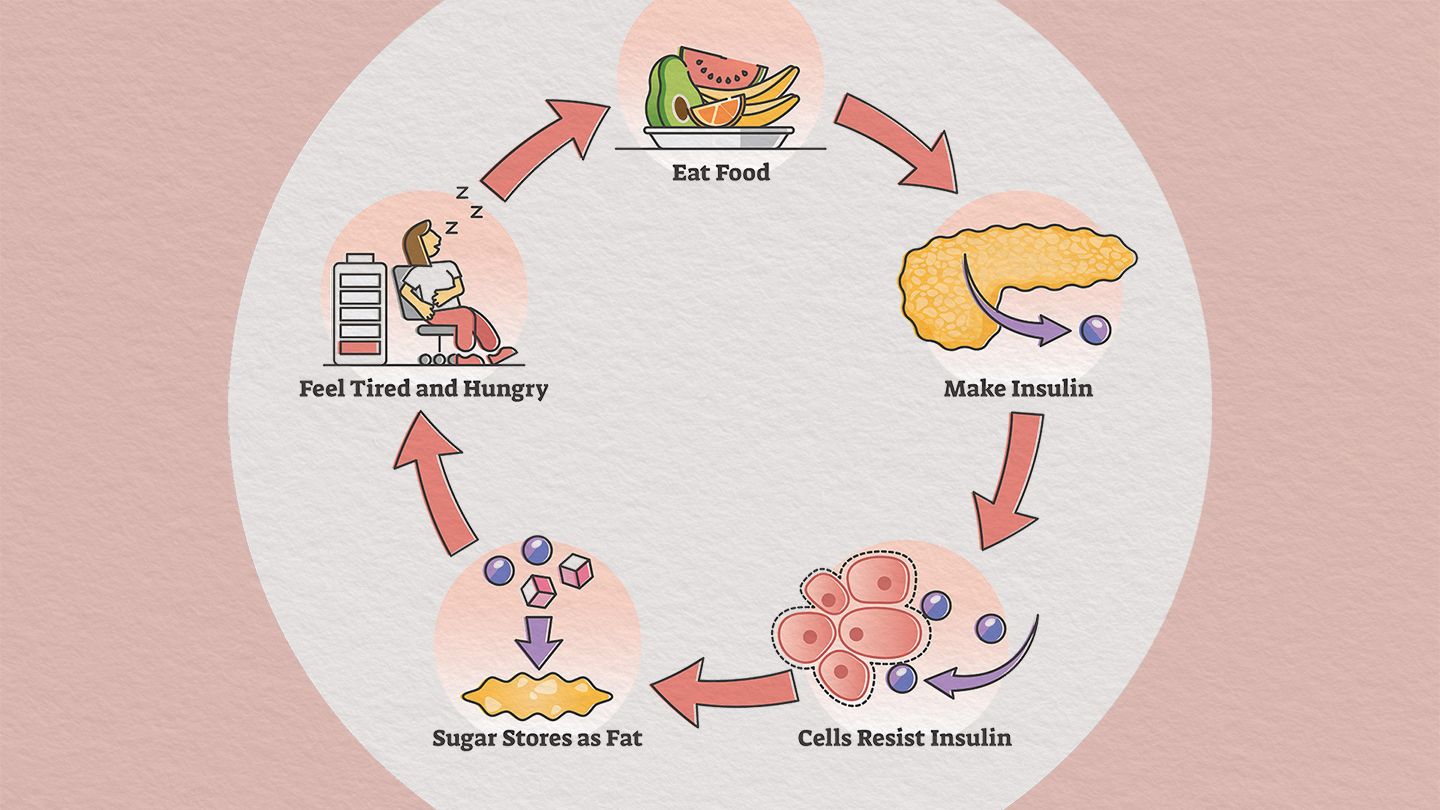
You eat like always. Maybe a little more. You feel full, but still hungry. Nothing dramatic changes at first. Your jeans tighten. You blame stress. You snack more often. Energy crashes come faster. You sleep fine but wake tired. Something’s different, but hard to name. You call it “slowing down.”
You feel like food stays longer
It’s not just what you eat—it’s how your body holds it. Meals feel heavier. Bloating lingers. You move less, gain more. You skip dessert, but still gain. That pattern used to make sense. Now it doesn’t. You track calories. They look fine. But your body disagrees.
Your blood sugar rises—but doesn’t fall
You eat a sandwich. Glucose spikes. Then it doesn’t drop. You stay wired, then crash. You feel foggy. You think it’s mental. But it’s chemical. Insulin rises to help. But your cells don’t listen. They close the door. So insulin knocks again. Harder. Louder. And your body keeps storing.
Insulin stores what isn’t used
You didn’t overeat. But insulin still pushes energy into storage. Fat holds it. Not muscle. Not movement. Fat becomes the safer option. Your body saves it. Just in case. But the case never comes. So it piles up. Bit by bit.
The more insulin, the louder the signal
You eat carbs. Insulin responds. Again and again. It doesn’t pause. It persists. Even when not needed. Your cells hear it constantly. They start ignoring. That’s resistance. The body turns down the volume. But insulin keeps shouting. And fat keeps growing.
You eat less, but nothing changes
You cut portions. Walk more. Skip snacks. Still, the scale doesn’t move. Or moves up. Your body’s not counting food. It’s reacting to insulin. If insulin’s high, storage stays active. Even on low calories. Even with salads.
Not all fat behaves the same
Belly fat responds differently. It’s hormonally active. It speaks back to insulin. It fuels resistance. The cycle deepens. You lose weight elsewhere. But belly stays. That’s not vanity. That’s biochemistry.
Your cravings speak the loudest
You want bread. Then chocolate. Then nothing. Then everything. It’s not just hunger. It’s insulin rhythm. Sugar crashes feed desire. That need isn’t emotional. It’s metabolic. You’re not broken. You’re responding.
Exercise doesn’t help the way it used to
You run. You lift. You sweat. But your clothes still feel tight. You burn. But your body stores. Insulin doesn’t pause for cardio. It listens to recovery. And sometimes, post-workout, insulin spikes higher. You eat. It stores. You wonder why.
Sleep changes how insulin behaves
You sleep four hours. Insulin shifts. One bad night, and glucose tolerance drops. Fatigue builds resistance. Recovery suffers. Hormones lose rhythm. One night becomes a week. A pattern sets in. You feel less control.
Fasting helps—until it doesn’t
You skip breakfast. Energy dips. You push through. Weight drops a little. Then stops. You plateau. Your cravings return stronger. Insulin adapts. It protects. The body adjusts faster than you think. Sometimes too fast.
Stress alone can change storage
You argue. You work late. You breathe shallow. Insulin spikes from cortisol’s whisper. Even without food, fat stores grow. That’s not overeating. That’s stress weight. It settles in your middle. Quietly. You feel it in your clothes.
Not all carbs trigger the same way
Fruit doesn’t hit like bread. Beans don’t feel like cake. Fiber slows the rise. Whole carbs signal softer. Insulin listens differently. That difference matters. Two plates. Same calories. Different reactions.
You think of fat as the enemy
But fat didn’t start this. It followed. It responded. To insulin. To signals. To survival. Your body isn’t working against you. It’s trying to preserve you. You just didn’t see the full conversation. Until now.
You can’t fix what you can’t feel
Insulin doesn’t hurt. It doesn’t sting. It just acts. Quietly. You don’t feel the storage. You just notice the result. The tight shirt. The crash after meals. The stubborn weight. The clues were always there.
